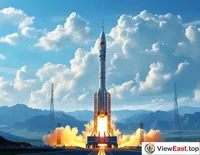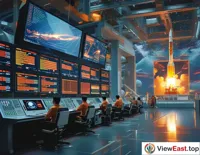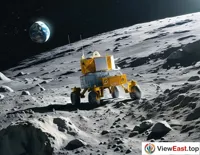






In the vast universe, China's space endeavors shine like a rising star, illuminating humanity's journey into the cosmos. From the "Dong Fang Hong" satellite to the "Chang'e" lunar exploration, from the "Tiangong" space station to the "Zhu Rong" Mars probe, every step of China's space program has been solid and forceful. Today, we stand at a new starting point, looking forward to the future of China's space endeavors, especially the development and prospects of heavy launch vehicles, which is an essential part of the Chinese space dream.
The Footprints of History: From "Dong Fang Hong" to "Tiangong"
The development of China's space program is like an epic tale. In 1970, the "Dong Fang Hong I" satellite was successfully launched, marking the beginning of a new era for China's space endeavors. In 2003, Yang Liwei boarded the "Shenzhou 5" spacecraft and entered space, making China the third country in the world to independently master manned space technology. Subsequently, the "Chang'e" series of probes successfully landed on the moon, and the construction of the "Tiangong" space station allowed China to have its own "home" in space.
The Future Heavyweight: Development of Heavy Launch Vehicles
In the future, one of the highlights of China's space endeavors will be the development of heavy launch vehicles. These rockets have a near-Earth orbit payload capacity of up to a hundred tons, and a translunar transfer orbit payload capacity of 50 tons, which will usher China's space activities into a new era of large-scale exploration. The development of heavy launch vehicles is not only a technological leap but also a testament to China's strength in space endeavors. They will be used for large-scale launch missions in low Earth orbit, such as space modules and space solar power stations, as well as for manned lunar missions, manned Mars/asteroid exploration, and solar system margin exploration missions.
The Wings of Dreams: New Manned Launch Vehicles
To achieve the capability for manned moon missions by 2030, China is developing new manned launch vehicles and new manned spacecraft. The new manned launch vehicles will enable China to conduct manned moon missions and lay the foundation for subsequent lunar scientific exploration and development, deep-space exploration, and the utilization of space resources. This is not only a giant leap for China's space endeavors but also a giant leap for humanity's exploration of the cosmos.
The Blueprint for Exploration: Lunar Scientific Station and Deep-Space Exploration
In the future planning of China's space endeavors, the construction of an international lunar scientific station will be a major focus. After the completion of the "Chang'e 6" and "Chang'e 7" missions, China plans to complete the launch of "Chang'e 8" by 2030, continue lunar polar scientific exploration, and verify key technologies for the subsequent scientific station, building the basic type of the lunar scientific station. In addition, missions such as Mars sample return and Jupiter system exploration will be carried out according to plan, with the entire planetary exploration project expected to be completed within 10 to 15 years.
Conclusion: The Cosmos Awaits, The Bright Future of China's Space Endeavors
The future development of China's space endeavors is like a magnificent scroll slowly unfolding. The development of heavy launch vehicles, the development of new manned launch vehicles, the construction of a lunar scientific station, and the advancement of deep-space exploration are all key terms for the future of China's space endeavors. They not only represent the brilliant achievements of China's space endeavors but also the continuation of humanity's dream of exploring the universe. As Yang Liwei said, "For the peace and progress of humanity, the Chinese have come to space." The future development of China's space endeavors will undoubtedly leave an even more brilliant chapter in the cosmos.